Are fiddle leaf figs toxic to cats and dogs? Here's what leading veterinarians have to say
They are everyone's favorite showpiece plant but what do you do if your fur baby decides to eat a fiddle leaf fig leaf?
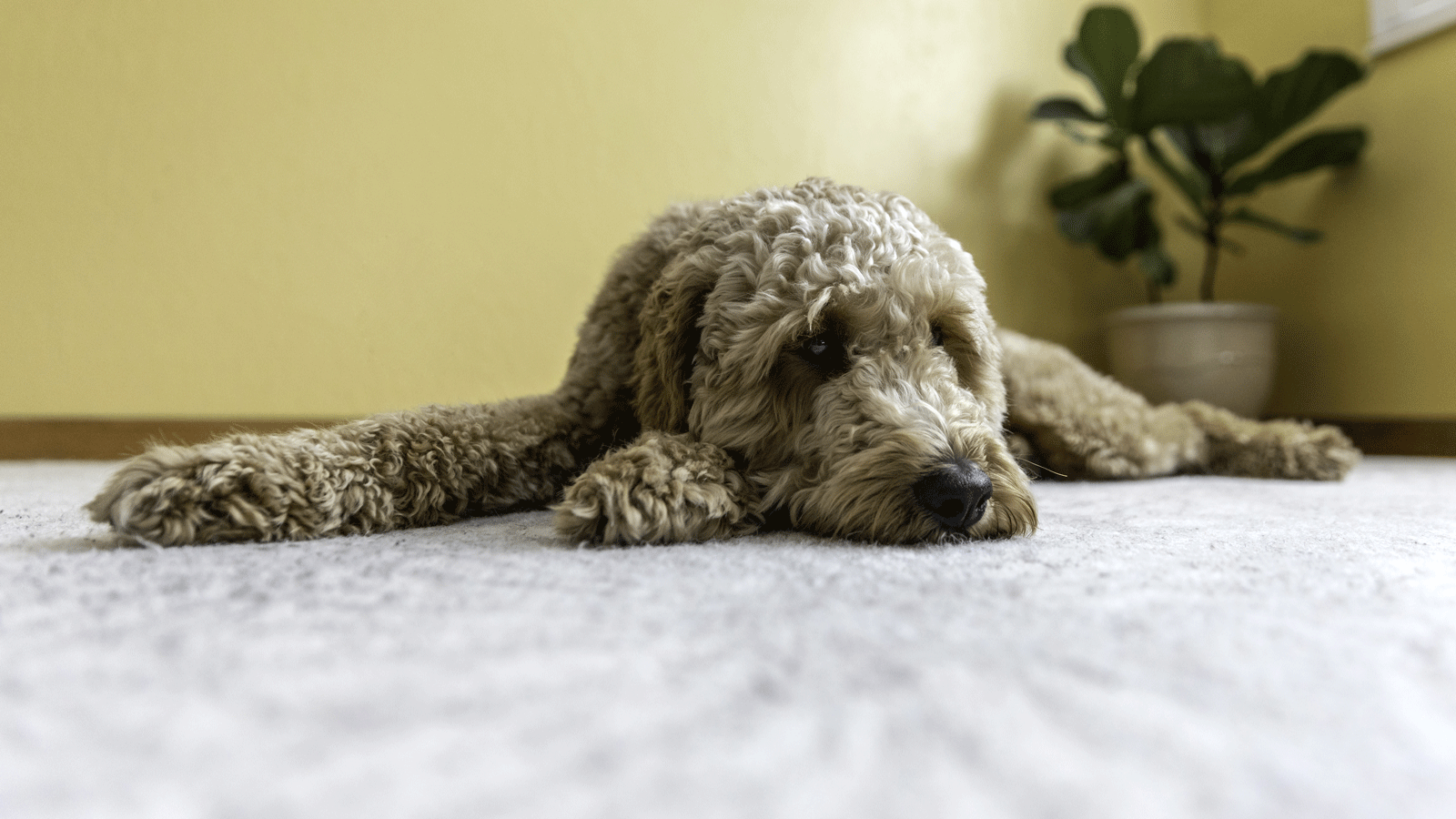

Plant parenting doesn't always combine well with pet parenting. When it comes to fiddle leaf figs it can be a disaster if your pet decides to investigate whether or not your plant might make a tasty treat. As well as causing an unpleasant toxic reaction in your pet it won't do your plant much good either.
You want to take the best care of your fiddle leaf fig so make sure your pet doesn't have easy access to your plant. Fur babies tend to be inquisitive by nature (as I know only too well after one of my dogs decided to eat a pile of leaves), so you'll want to make sure that if they do decide to have a nibble you'll know exactly what to do.
Remember too that your fiddle leaf fig goes by other names so don't get caught out. 'Pet owners should be aware of the other common names for this plant,' says leading veterinarian Bernadine Cruz, who also works as a veterinary advisor for Paw Tree. 'These include horsehead philodendron, heartleaf, split leaf, panda plant, Cordatum, fruit salad plant, red emerald, red princess, and saddle leaf.' As well as Bernadine, we've consulted several other leading veterinarians to get their views on fiddle leaf fig safety around pets and here's what they told us.

Sarah Wilson has been writing about gardens since 2015, covering everything from garden design to houseplant care. She has studied introductory garden and landscape design as well as floristry. A proud houseplant parent, she enjoys tending to her collection of more than 50 indoor plants. As the owner of two inquisitive spaniels she is particularly interested in the subject of which plants are safe for pets.
Are fiddle leaf figs toxic to cats and dogs?
Yes, fiddle leaf figs are toxic to both cats and dogs. In fact, every part of the plant is poisonous to cats and dogs. But the good news is that fiddle plants are only mildly poisonous so it won't be life threatening.
'Unless your pet has an allergic reaction (not common) fiddle leaf figs are generally not considered lethal,' says triple board-certified veterinary specialist Dr Doug Mader. 'There are four toxicity levels when discussing toxic plants, and fiddle feaf fig is in the lowest toxicity level, or level 4.'
It’s still important to prevent pets from eating any part of your fiddle plant to avoid them experiencing an adverse reaction. If you're still concerned about having one in your house, you might want to consider an alternative pet safe indoor plants instead.
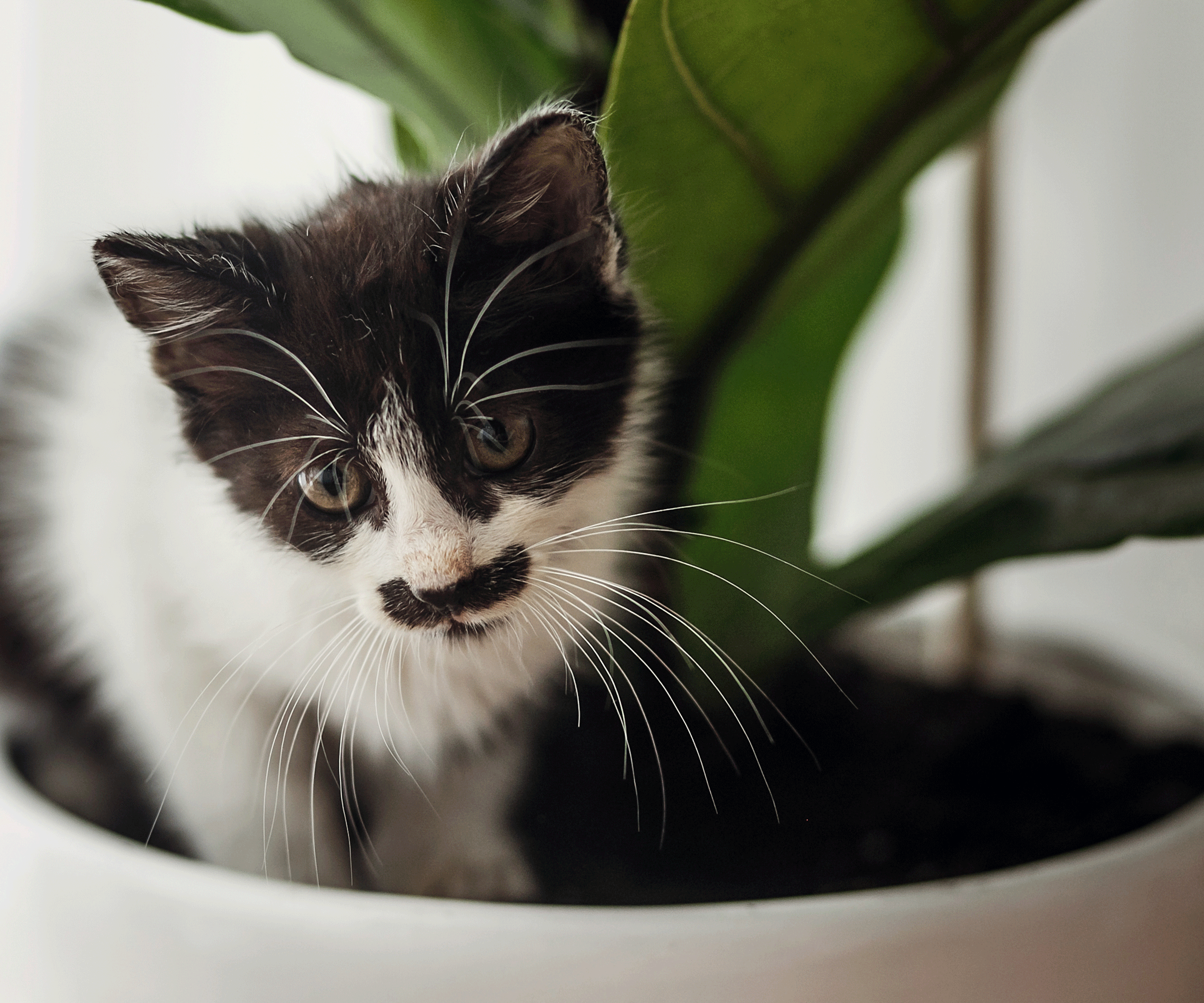
We know it's comfortable but train kittens not to sit in plant pots
What are the side effects if my pet eats a fiddle leaf fig?
If your pet chews and eats fiddle plant leaves or stems they will ooze a white sap that's extremely irritating if it gets on their skin or into their eyes. It can also cause problems in the stomach and intestinal tract if ingested.
Design expertise in your inbox – from inspiring decorating ideas and beautiful celebrity homes to practical gardening advice and shopping round-ups.
'All parts of this indoor plant, including the leaves, contain insoluble calcium oxalate crystals,' explains veterinarian Amanda Takiguchi of bettafishbay.com. 'If your pet chews on a fiddle leaf fig plant, these crystals will be released, penetrating and irritating the mouth and digestive tract. This results in drooling, vomiting, and decreased appetite, and pets may also paw at their mouths.'
As fiddle leaf causes inflammation and swelling, severely affected pets may occasionally have difficulty breathing too. 'This is more of a concern in short-nosed (known as orbrachycephalic) breeds, which are at greater risk of upper airway obstruction and choking,' explains Amanda.
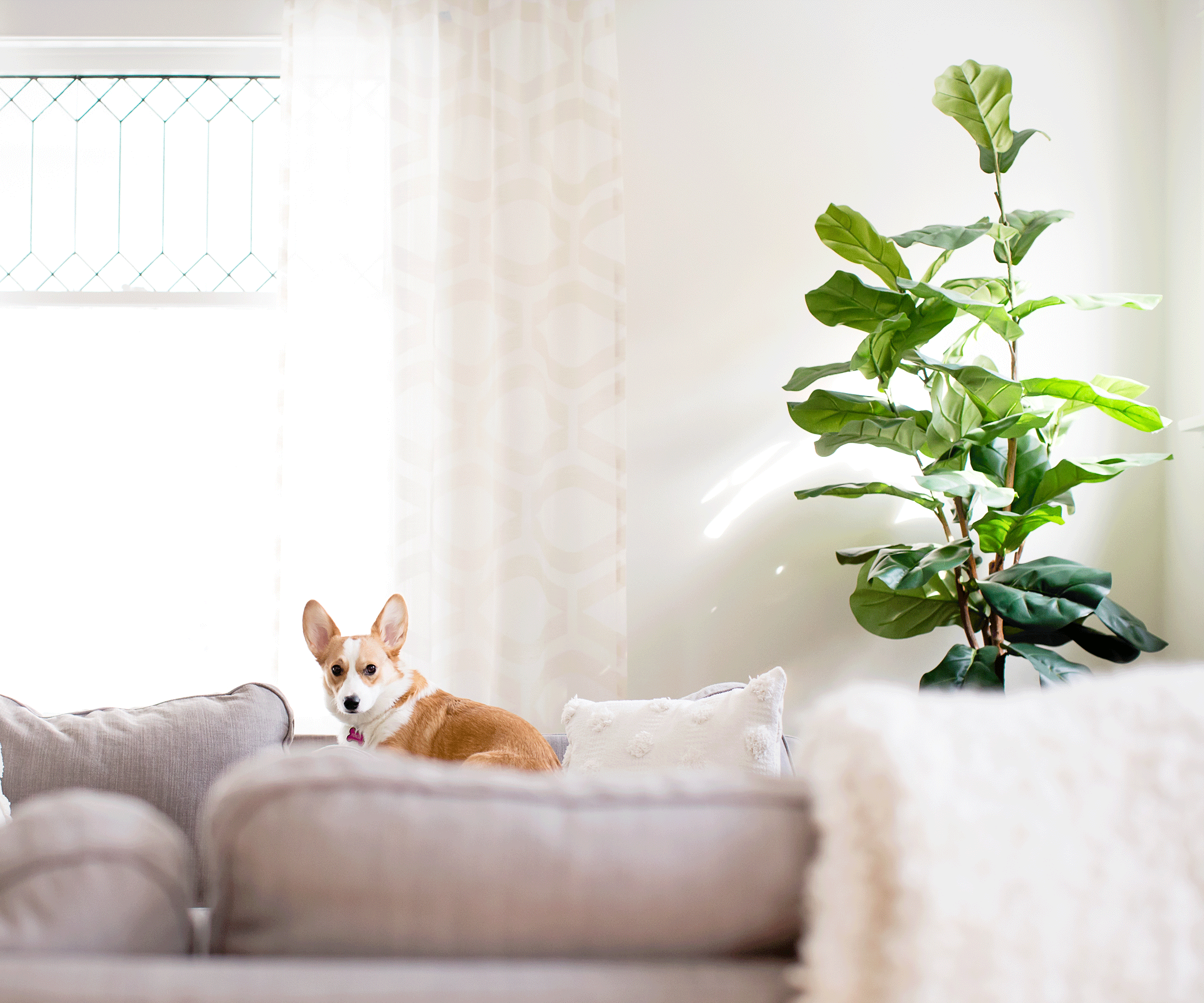
If your pet tries to look innocent when you walk in the room don't be fooled
What to do if your pet eats a fiddle leaf fig leaf
If your pet eats a fiddle leaf fig leaf or stem it can cause vomiting, diarrhea, excessive drooling, difficulty swallowing and abdominal pain. This is caused by exposure to the sap, which can cause various kinds of irritation to pets. But at which point do you know it’s time to call a pet poison helpline or your vet?
'If you know or suspect your pet has chewed on or eaten a fiddle leaf fig observe them carefully,' says Dr Jamie Whittenburg, veterinarian director at Cat-World.com and director of Kingsgate Animal Hospital. 'Watch for signs of mouth pain such as drooling, lip smacking, pawing at the face, or lack of appetite. If you see anything out of the norm, including vomiting, get your pet seen by a veterinarian as soon as possible.' When going to the veterinary hospital, take a picture or part of the plant with you to allow for identification.
'The veterinarian can rinse out the mouth, and if needed, give gastrointestinal protectants to prevent or ameliorate any negative impact the toxic sap has to the animal,' says Dr Doug Mader. 'Fortunately, these exposures are rarely life threatening.'
In the event you are unsure , call your vet or the ASPCA Pet Poison Hotline at 1-888-426-4435. 'They can advise you on the best course of action and whether treatment is necessary,' says Dr Paula Simons. 'In the meantime, keep your pet calm and quiet and remove the plant from reach.' A consultation fee applies to the ASPCA hotline and can be paid with a credit card over the phone.
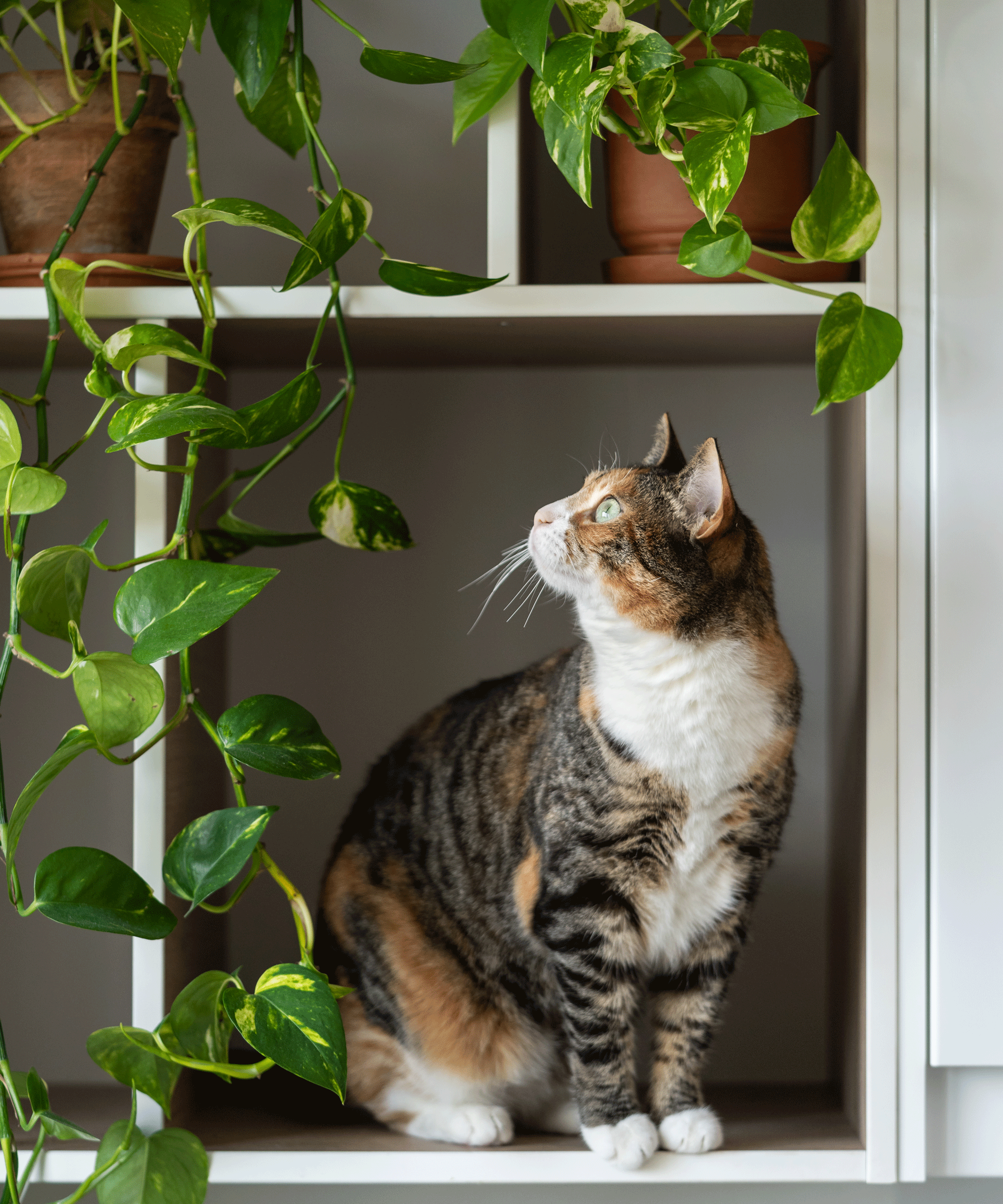
In theory shelves are a good idea for putting plants out of reach (depending on how agile your pet is)
Fiddle leaf fig safety tips for pets
The top fiddle leaf fig safety tip is to make sure you keep your plant away from pets at all times. With dogs this means keeping your fiddle out of their reach by putting it somewhere high up such as a shelf or plant stand. With cats this translates as putting your plant in a room your pet cannot access or up on a very high shelf.
I find the bathroom is a good place for fiddle leaf figs because my dogs don't tend to go in there for fear of the bath tub (plus fiddle leaf figs love the humidity). Obviously the larger the plant and the more times you've repotted a fiddle leaf fig into an increasingly bigger pot, the more difficult this becomes so you might need to seek out alternative ways to deter your pets. Using citrus essential oils soaked in cotton wool balls as a deterrent is an easy trick as pets don't like the smell. Make sure the essential oils don't come into contact with plant or soil though as they can burn.
Trying using barriers too. 'You can place a physical barrier such as an adjustable pet gate around your plants to prevent your pets from accessing them,' says K9 of Mine veterinary consultant Dr Paula Simons. Something like this one from Amazon would be suitable. 'Also try teaching your pet to stay away from your plants by using positive reinforcement training techniques. Use a cue like "leave it" and reward your pet with treats when they move away from the plant,' adds Dr Paula.
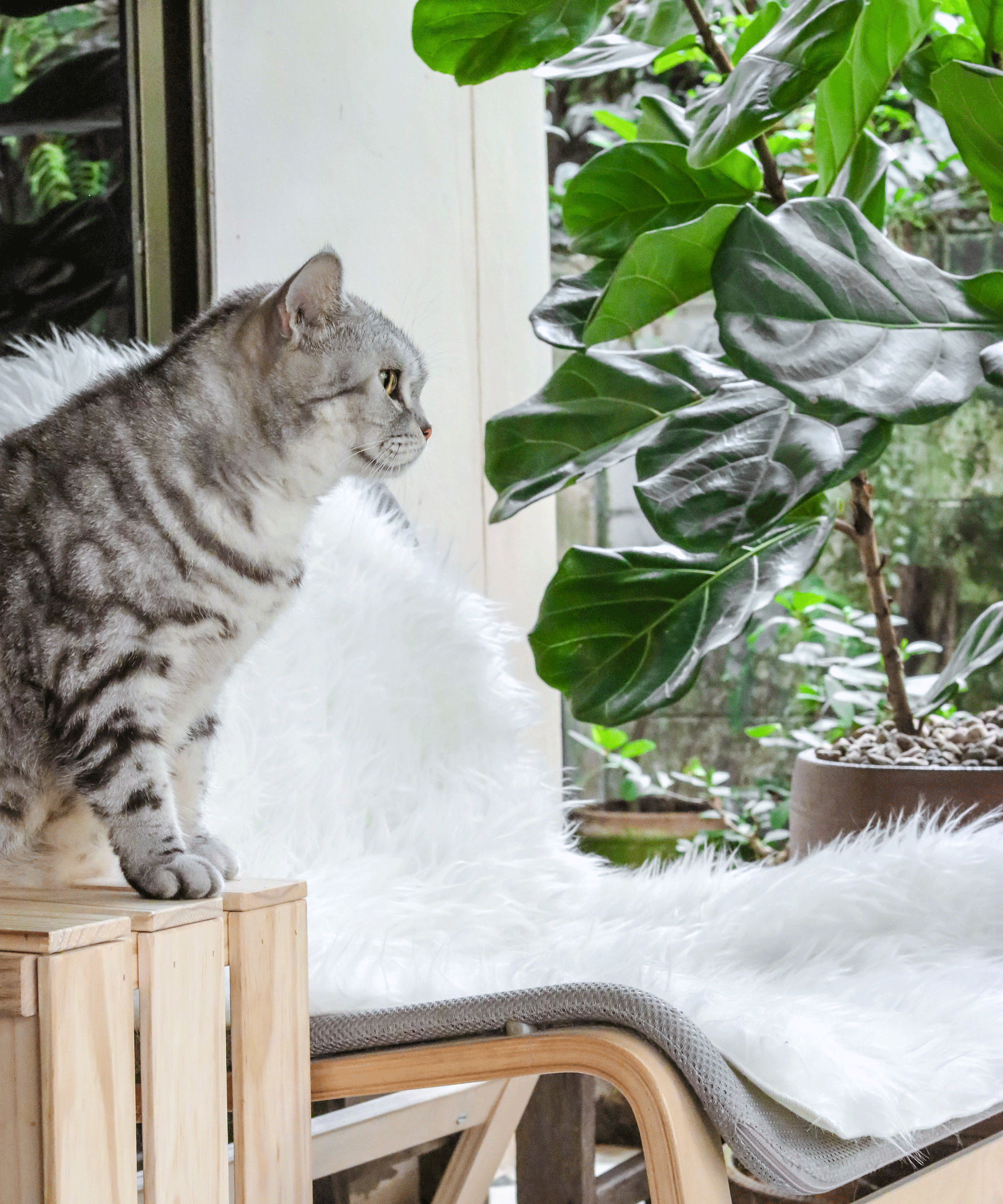
Make sure your pets have plenty of distractions so they don't start investigating your fiddle leaf fig
How to stop your pet chewing fiddle leaf fig leaves
If your pet has a history of chewing plants the safest thing to do is to keep only non-toxic plants inside your home. 'A cat-friendly garden with catnip, cat thyme, and cat grass is an excellent way to help to provide environmental enrichment and stimulation,' says Paola Cuevas, veterinarian and behaviorist with Hepper.com. Find out more about the specifics of plants that are toxic to cats.
Makes sure there are plenty of chew toys around to stimulate your pet so they don't start eyeing your fiddle leaf fig as a form of entertainment. 'If your dog likes to get into your plants provide them with chewing and playing alternatives to keep them busy and moving,' says Paola. Keep them supplied with healthy treats too which will discourage them from snacking on your fiddle plant.

Lifestyle journalist Sarah Wilson writes about garden design and landscaping trends for Homes & Gardens. She has studied introductory garden and landscape design, and also has an RHS Level 2 qualification in the Principles of Plant Growth and Development. She is a regular contributor to Homes & Gardens and Livingetc. She has also written for Country Living, Country Homes & Interiors, and Modern Gardens magazines